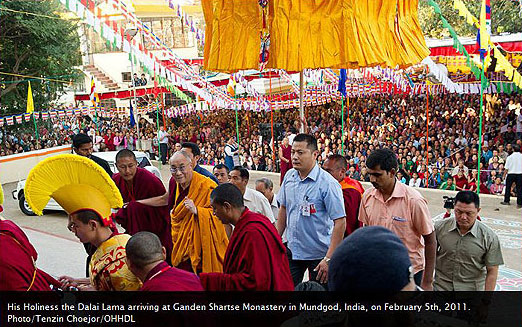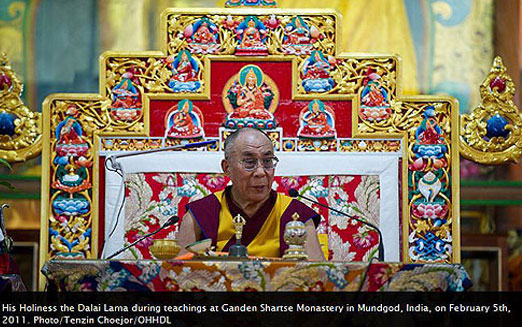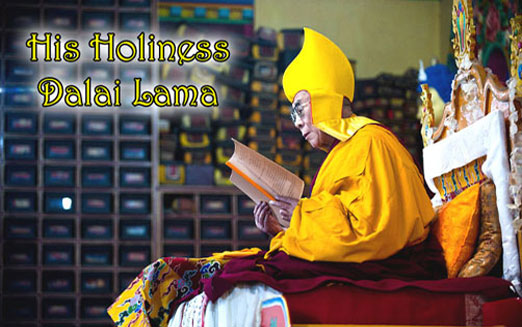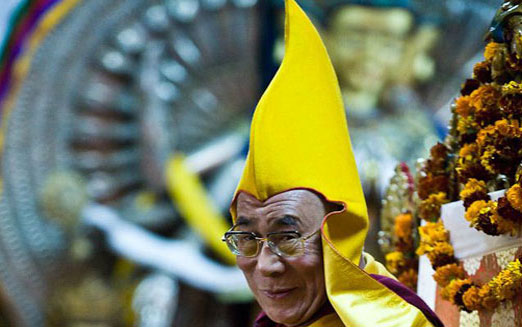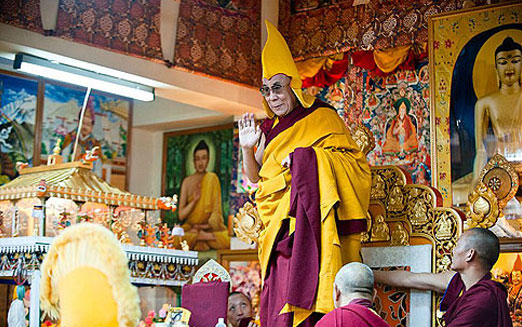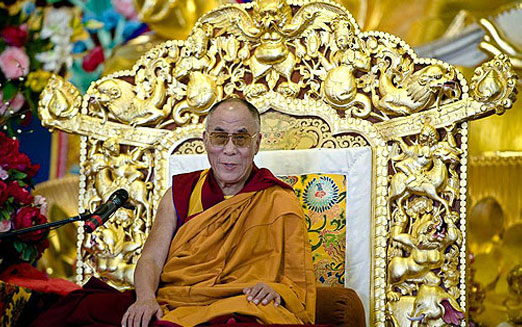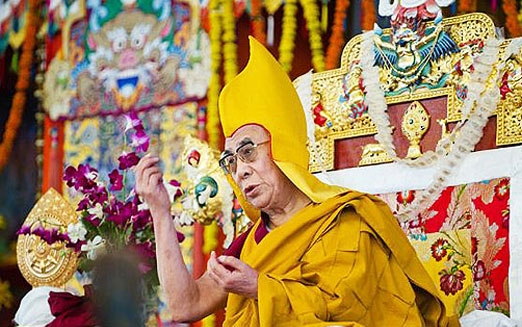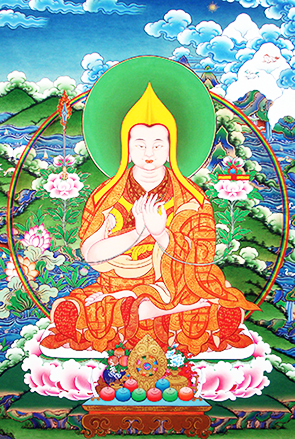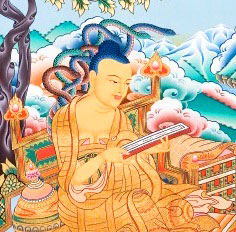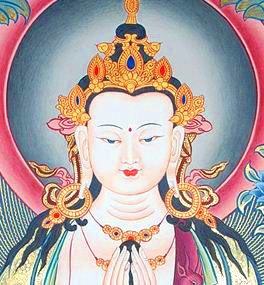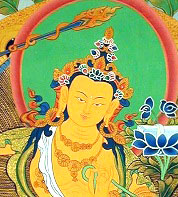GADEN MONASTERY
FOUNDER
Je Tsong
Khapa,
Lobsang
Drakpa (1357–1419)
Je Tsong
Khapa, Lobsang Drakpa, was the founder of the Gelug
tradition and one of the most influential Tibetan Buddhist scholars
of the last millennium. He was born in the Tsongkha region of Amdo.
At age 7 he received novice ordination and the name Lobsang Dragpa
Pal. Later he moved to Lhasa and studied with more than 50 teachers
of all Tibetan Buddhist traditions, including his spiritual master
Rendawa.
At age 24 he received
full ordination, and at age 37 he went with eight of his greatest
students to the region of Olkar where he spent many years in
retreat, teaching and debating on the meaning of the sutras and
tantras, which resulted in a deep understanding of Nagarjuna’s
Madhyamaka view. In his forties he composed both Lamrim
Chenmo (The Great Treatise on the Stages of the Path)
and Ngarim Chenmo (The Great Treatise on the Tantric
Stages of the Path). In 1409 he instituted the Great Prayer
Festival in Lhasa, and in 1411 he founded Gaden
Monastery, which eventually became the largest monastery
in Tibet. Widely regarded as an emanation of Manjushri, Je Tsong
Khapa composed eighteen volumes of works, of which the majority
dealt with tantric subjects. Among his many famous students were
his two principle disciples, Khedrub Je and Gyaltsab Je, and H.H.
the First Dalai Lama Gendun Drub.






